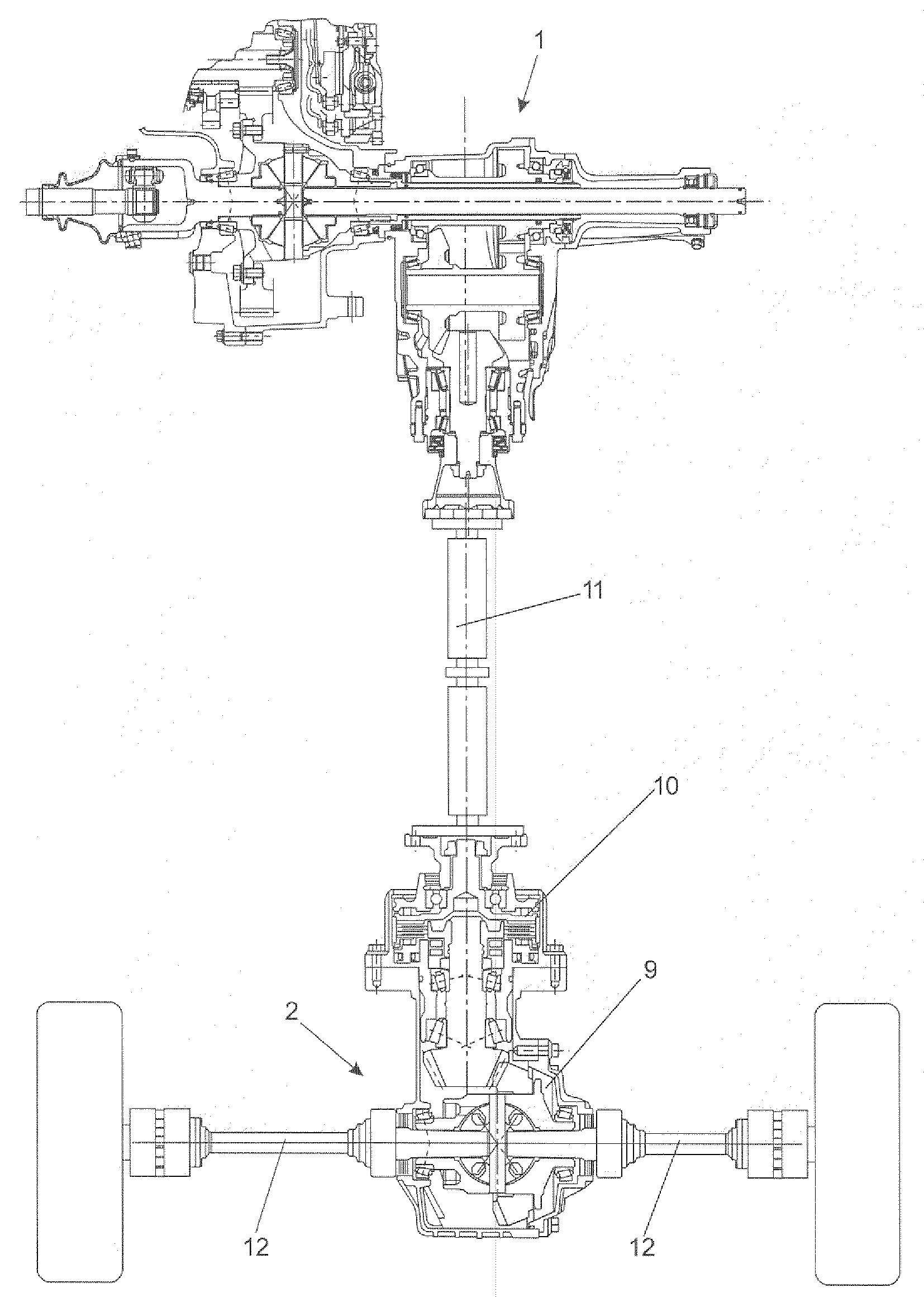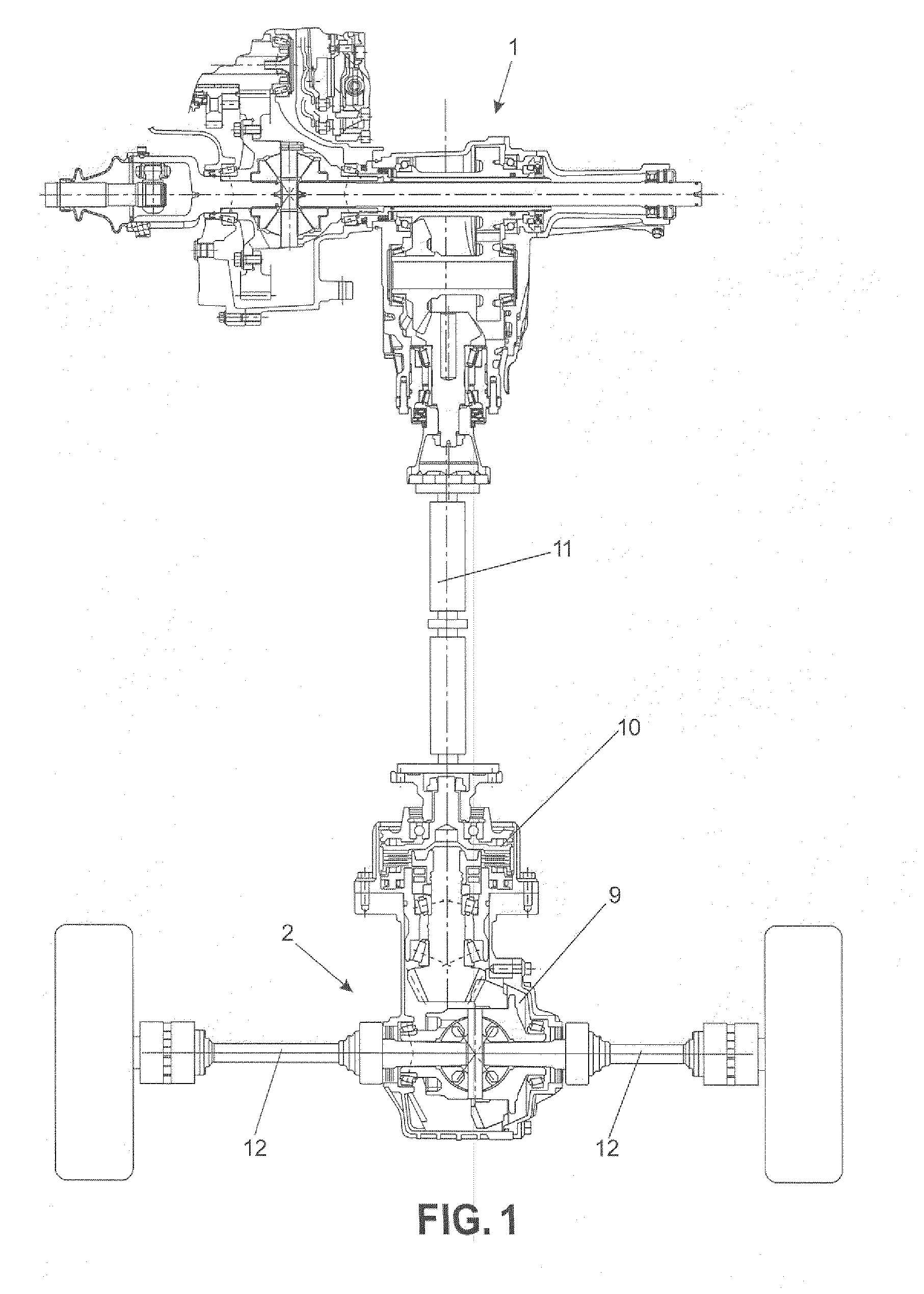Drive train for a vehicle with connectable secondary axle
a technology of drive train and secondary axle, which is applied in the direction of vehicle components, control devices, transportation and packaging, etc., can solve the problems of affecting the operation the tension of the drive train, and the complexity of the drive train structural aspect, so as to reduce the additional structural cost, minimize the power loss, and improve the effect of operating comfort and suitability for daily us
- Summary
- Abstract
- Description
- Claims
- Application Information
AI Technical Summary
Benefits of technology
Problems solved by technology
Method used
Image
Examples
Embodiment Construction
[0039]FIG. 1 shows a drive train of a vehicle, which is known from the prior art with respect to its functional principle. The primary axle 1 is permanently driven. A non-switchable angular gear branches part of the drive power off from the primary axle and supplies it to the secondary drive train serving to drive the secondary axle 2. Provided in front of the axle drive unit 9 is a hang-on coupling 10 which in the closed state connects an intermediate shaft 11 and the axle drive unit 9 non-positively and is thus able to convey the secondary drive train output as required to the axle drive unit 9. The axle drive unit 9 has a conventional structure and has a bevel gear differential to which the secondary side shafts 12 attach.
[0040]FIG. 2 shows a drive train of a vehicle, the functional principle of which is likewise known from the prior art. In contrast to FIG. 1 the axle drive unit 9 is not connected to the intermediate shaft 11 via a switchable coupling, but the intermediate shaft...
PUM
 Login to View More
Login to View More Abstract
Description
Claims
Application Information
 Login to View More
Login to View More - R&D
- Intellectual Property
- Life Sciences
- Materials
- Tech Scout
- Unparalleled Data Quality
- Higher Quality Content
- 60% Fewer Hallucinations
Browse by: Latest US Patents, China's latest patents, Technical Efficacy Thesaurus, Application Domain, Technology Topic, Popular Technical Reports.
© 2025 PatSnap. All rights reserved.Legal|Privacy policy|Modern Slavery Act Transparency Statement|Sitemap|About US| Contact US: help@patsnap.com



